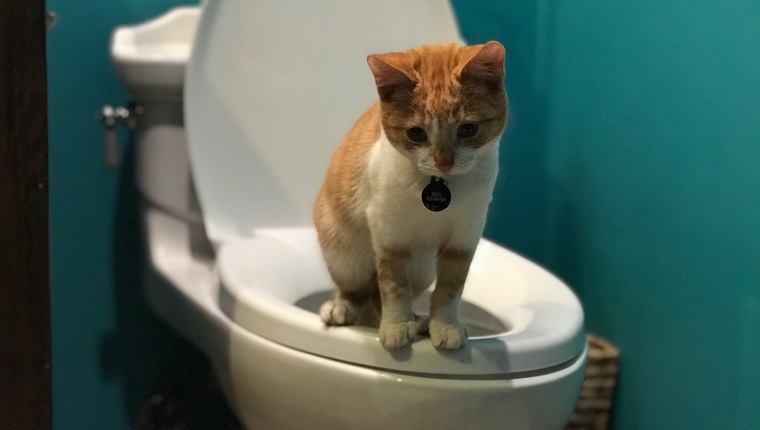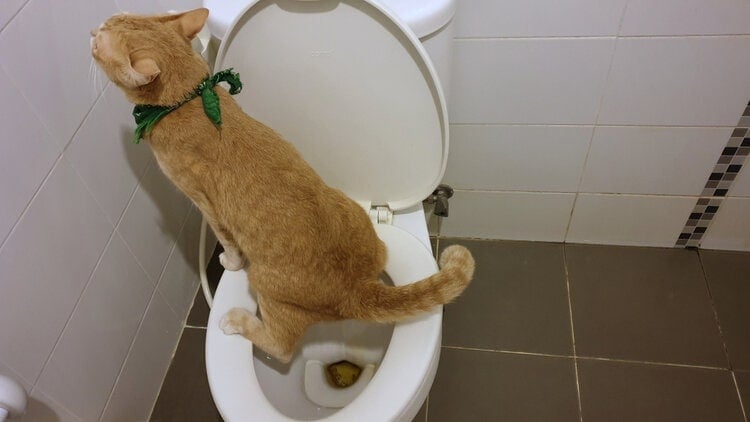Hazards of Flushing Cat Poop Down Your Toilet - Prevent Possible Issues
Hazards of Flushing Cat Poop Down Your Toilet - Prevent Possible Issues
Blog Article
In this article in the next paragraph yow will discover a bunch of good facts pertaining to How to Dispose of Cat Poop and Litter Without Plastic Bags.

Introduction
As cat owners, it's important to bear in mind just how we dispose of our feline pals' waste. While it may seem practical to flush feline poop down the bathroom, this practice can have harmful consequences for both the environment and human health.
Alternatives to Flushing
Fortunately, there are more secure and a lot more liable means to get rid of cat poop. Consider the adhering to choices:
1. Scoop and Dispose in Trash
The most common approach of getting rid of feline poop is to scoop it into a naturally degradable bag and throw it in the trash. Be sure to make use of a dedicated clutter inside story and take care of the waste without delay.
2. Usage Biodegradable Litter
Choose naturally degradable cat clutter made from materials such as corn or wheat. These litters are environmentally friendly and can be securely disposed of in the garbage.
3. Bury in the Yard
If you have a backyard, take into consideration burying pet cat waste in a marked location far from veggie yards and water sources. Make sure to dig deep enough to avoid contamination of groundwater.
4. Set Up a Pet Waste Disposal System
Invest in a pet dog garbage disposal system especially designed for feline waste. These systems make use of enzymes to break down the waste, minimizing smell and ecological influence.
Wellness Risks
Along with ecological issues, purging cat waste can additionally present health threats to people. Cat feces might include Toxoplasma gondii, a bloodsucker that can trigger toxoplasmosis-- a possibly serious illness, especially for pregnant ladies and people with weakened body immune systems.
Environmental Impact
Flushing feline poop presents dangerous pathogens and parasites right into the water supply, positioning a considerable threat to aquatic environments. These impurities can adversely influence aquatic life and concession water top quality.
Verdict
Responsible pet dog possession extends past providing food and shelter-- it also entails correct waste monitoring. By avoiding flushing cat poop down the toilet and opting for different disposal approaches, we can lessen our environmental impact and shield human wellness.
Why Can’t I Flush Cat Poop?
It Spreads a Parasite
Cats are frequently infected with a parasite called toxoplasma gondii. The parasite causes an infection called toxoplasmosis. It is usually harmless to cats. The parasite only uses cat poop as a host for its eggs. Otherwise, the cat’s immune system usually keeps the infection at low enough levels to maintain its own health. But it does not stop the develop of eggs. These eggs are tiny and surprisingly tough. They may survive for a year before they begin to grow. But that’s the problem.
Our wastewater system is not designed to deal with toxoplasmosis eggs. Instead, most eggs will flush from your toilet into sewers and wastewater management plants. After the sewage is treated for many other harmful things in it, it is typically released into local rivers, lakes, or oceans. Here, the toxoplasmosis eggs can find new hosts, including starfish, crabs, otters, and many other wildlife. For many, this is a significant risk to their health. Toxoplasmosis can also end up infecting water sources that are important for agriculture, which means our deer, pigs, and sheep can get infected too.
Is There Risk to Humans?
There can be a risk to human life from flushing cat poop down the toilet. If you do so, the parasites from your cat’s poop can end up in shellfish, game animals, or livestock. If this meat is then served raw or undercooked, the people who eat it can get sick.
In fact, according to the CDC, 40 million people in the United States are infected with toxoplasma gondii. They get it from exposure to infected seafood, or from some kind of cat poop contamination, like drinking from a stream that is contaminated or touching anything that has come into contact with cat poop. That includes just cleaning a cat litter box.
Most people who get infected with these parasites will not develop any symptoms. However, for pregnant women or for those with compromised immune systems, the parasite can cause severe health problems.
How to Handle Cat Poop
The best way to handle cat poop is actually to clean the box more often. The eggs that the parasite sheds will not become active until one to five days after the cat poops. That means that if you clean daily, you’re much less likely to come into direct contact with infectious eggs.
That said, always dispose of cat poop in the garbage and not down the toilet. Wash your hands before and after you clean the litter box, and bring the bag of poop right outside to your garbage bins.
https://trenchlesssolutionsusa.com/why-cant-i-flush-cat-poop/

We had been made aware of that editorial on How to Dispose of Cat Poop and Litter Without Plastic Bags from an acquaintance on a different web property. Those who enjoyed reading our blog posting kindly don't forget to pass it around. Thanks a bunch for your time. Visit us again soon.
At This Website Report this page